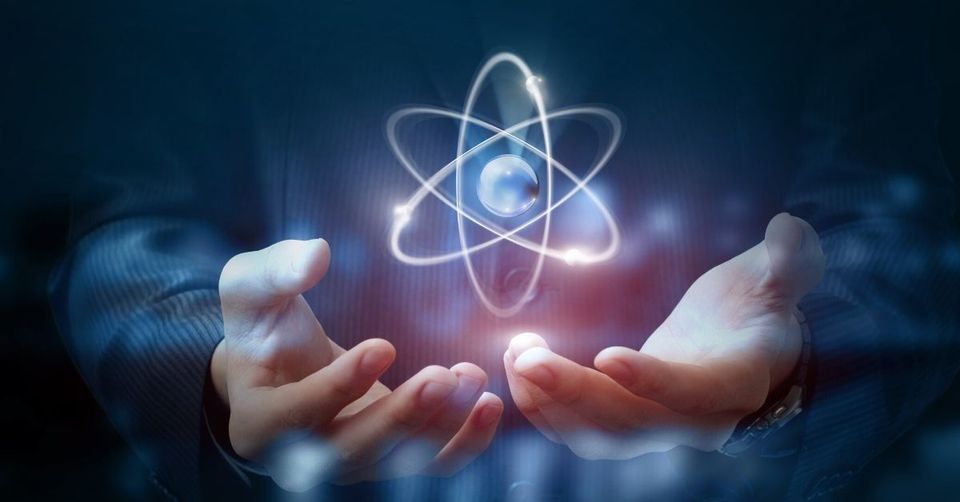Blog Post
A Brief History of Energy - Nuclear Power |Dyball Associates
Matt Olney • Apr 06, 2020
The use of nuclear power may be on the decline around the world, but it is undeniable that it has revolutionised the energy sector forever. We look at the history of nuclear power and see what the future may hold for it.
Discovery of the Atom
Atom energy was once thought of as the stuff of science fiction and even today the technology used in its creation is some of the most advanced ever created by humans.
It might surprise you to learn then that the history of nuclear power dates back to 450 BC when the ancient Greek philosopher Democritus first theorised the existence of atoms.
He wondered what would happen if you managed to cut a piece of matter into smaller and smaller pieces and pondered at what point does it reach when it cannot be cut any further. He called these uncuttable pieces of matter atomos, and this is where the modern name atom comes from.
Unfortunately for Democritus, his ideas about atoms were rejected as ludicrous by the philosopher Aristotle.
This rejection of the atomos by the revered Aristotle resulted in the concept being ignored for 2000 years!
It wasn’t until 1800 that the idea was revived. British chemist John Dalton began to look into Democritus’s early ideas on the atomos and conducted many experiments to provide evidence of their existence.
Eventually, after much experimentation and theorising, Dalton developed his theory of the atom.
His theory was widely accepted and most it is still agreed with today, aside from the part that stated that atoms are the smallest particles. We now know that are particles even smaller than atoms.
Uranium
One of the key parts of the history of nuclear energy comes in the form of Uranium.
The chemical element was first discovered in 1789 by Martin Heinrich Klaproth who named it after the newly discovered planet Uranus. In 1896 its radioactive properties were discovered for the first time.
Going Nuclear
It wasn’t until the 1930s that research and experimentation into atoms revealed the enormous potential for creating energy.
In 1932 Ernest Rutherford discovered that when atoms were split by protons, they would release enormous amounts of energy. However, he and other nuclear pioneers at the time including Albert Einstein believed that the ability to harness the power of the atom was still a long way away in the future. That all changed however when in the same year the neutron was discovered.
Neutrons were then used in many experiments and in the autumn of 1938, German scientists Otto Hahn and Fritz Strassman fired neutrons from a source containing the elements radium and beryllium into uranium. The results took them by surprise as it created many lighter elements, but they couldn’t explain why they did not total the uranium’s mass. This experiment confirmed Einstein’s theory and proved that fission had occurred.
World War Two
With the Nazis rise to power many prominent scientists fled Germany and took their knowledge with them to the United States of America.
Scientists throughout the world began to believe a self-sustaining chain reaction might be possible and that it would happen if enough uranium could be brought together under proper conditions.
With the outbreak of war many of these scientists including Robert Oppenheimer, began working for the US military and under the guise of the Manhattan Project, their theories were proven correct when the first nuclear reactor was created and began operation.
The reactor, unfortunately, wasn’t utilised as a potential for clean energy but instead was used to produce weapons-grade plutonium for use in the first nuclear weapons.
As he witnessed the first detonation of a nuclear weapon on July 16, 1945, a piece of Hindu scripture ran through the mind of Robert Oppenheimer: “Now I am become Death, the destroyer of worlds”.
One month later the USA dropped two nuclear bombs on Japan. The devastating attacks caused Japan to sue for peace bringing an end to the war, but it was clear that the world would never be the same again.
Aftermath
Following the end of World War Two, the nuclear genie was out of the bottle with many nations including the UK, France and the Soviet Union all proceeding to research and develop their nuclear capabilities.
For the next 45 years, the world entered a cold war between the two new superpowers of the nuclear-armed USA and the Soviet Union.
Yet, despite the tensions, nuclear energy was also used for electricity generation. In 1956 the first commercial nuclear power station was opened in Calder Hall at Windscale, England.
The nuclear power industry grew rapidly in the 1960s as utility companies saw it as an economical, environmentally clean and safe way to produce electricity.
However, in the 1970s and 1980s growth slowed as demand for electricity reduced and concerns began to grow over how safe the reactors were, how waste was disposed and the potential impacts on the environment.
The 1986 Chernobyl disaster shocked the world and set nuclear power on the path of decline. Numerous countries, including Austria (1978), Sweden (1980) and Italy (1987) (influenced by the disaster) voted in referendums to oppose or phase out nuclear power.
Modern Day
Woes for the nuclear energy sector grew throughout the 90s with environmental groups targeting it, but at the start of the 2000s, there were signs that the sector was about to see something of a revival due to increasing demand for renewable energy sources.
At the start of the new millennium, many governments began to reassess their nuclear strategy. However, the optimism in the sector was cut short with the catastrophic earthquake and Tsunami that struck Japan in 2011.
The disaster once more exposed the dangers posed by nuclear power when the Fukushima power plant went into meltdown. There have been no deaths or cases of radiation sickness from the nuclear accident, but over 100,000 people were evacuated from their homes to ensure this, but vast tracks of land remain irradiated
today.
The disaster prompted many nations around the world including Germany to bring their nuclear energy programmes to an end.
In the UK there are now 15 operational nuclear plants that generate around 21% of the nation’s energy requirements.
By 2025 that capacity will be halved as the older power stations are retired from service.
This doesn’t mean the end of nuclear power in the UK, however, as the construction of a new generation of power stations is underway.
Further Reading
The Nuclear option needed to hit UK carbon emissions targets says NIA
Contact us now to find out how you can incorporate our energy supplier CRM system into your business.
Dyball Associates are proud to help new supply businesses
successfully launch in the UK market.
Through our energy market consultancy services, and the software we’ve developed, we’re supporting new UK electricity and gas suppliers to hit the ground running and start supplying as quickly as possible.
For more information on how to start and manage an energy company, get in touch
with Dyball Associates today.
Follow us on Twitter
and LinkedIn
to keep up to date with the latest news and updates in the energy industry.






